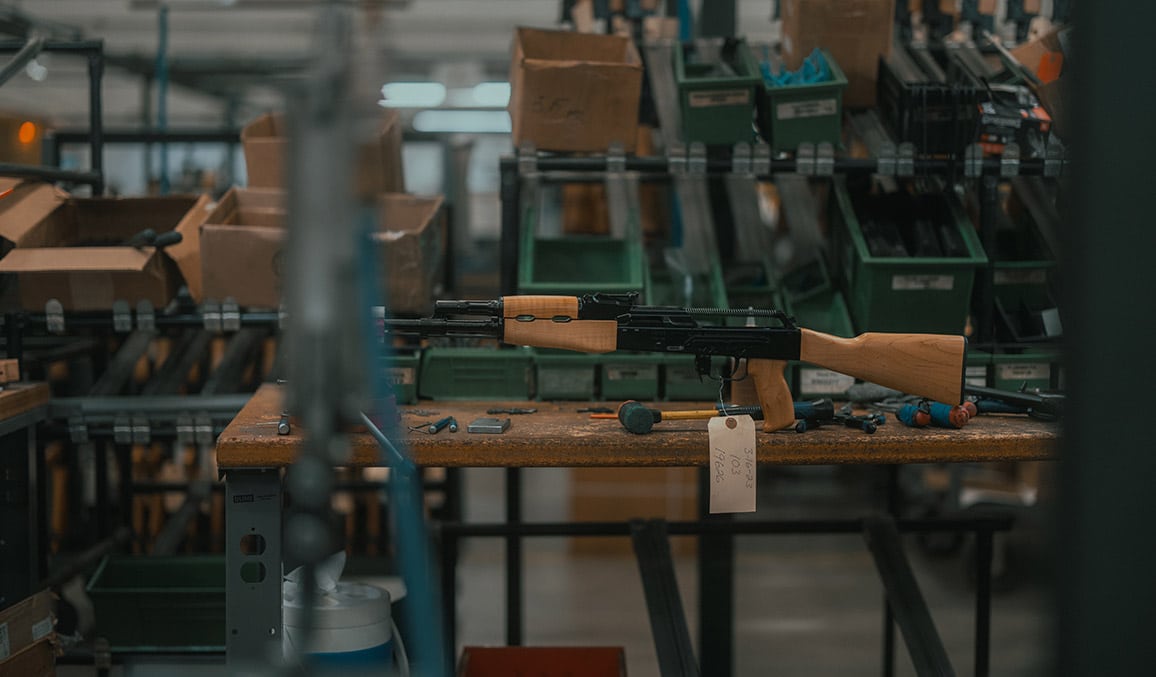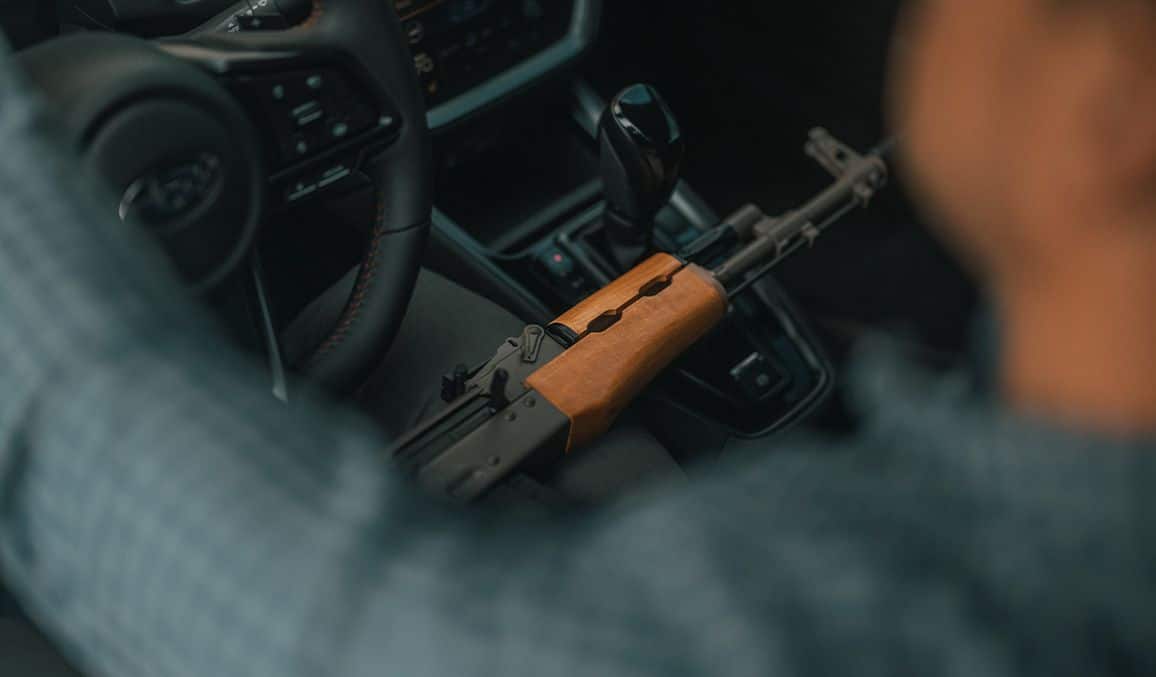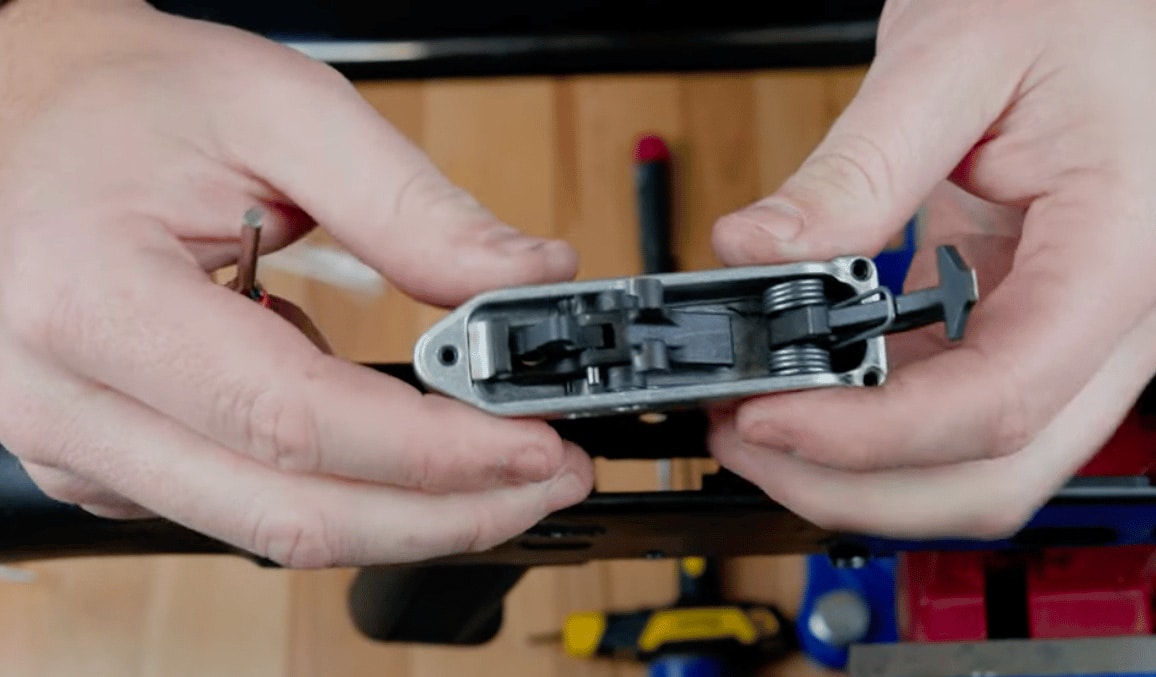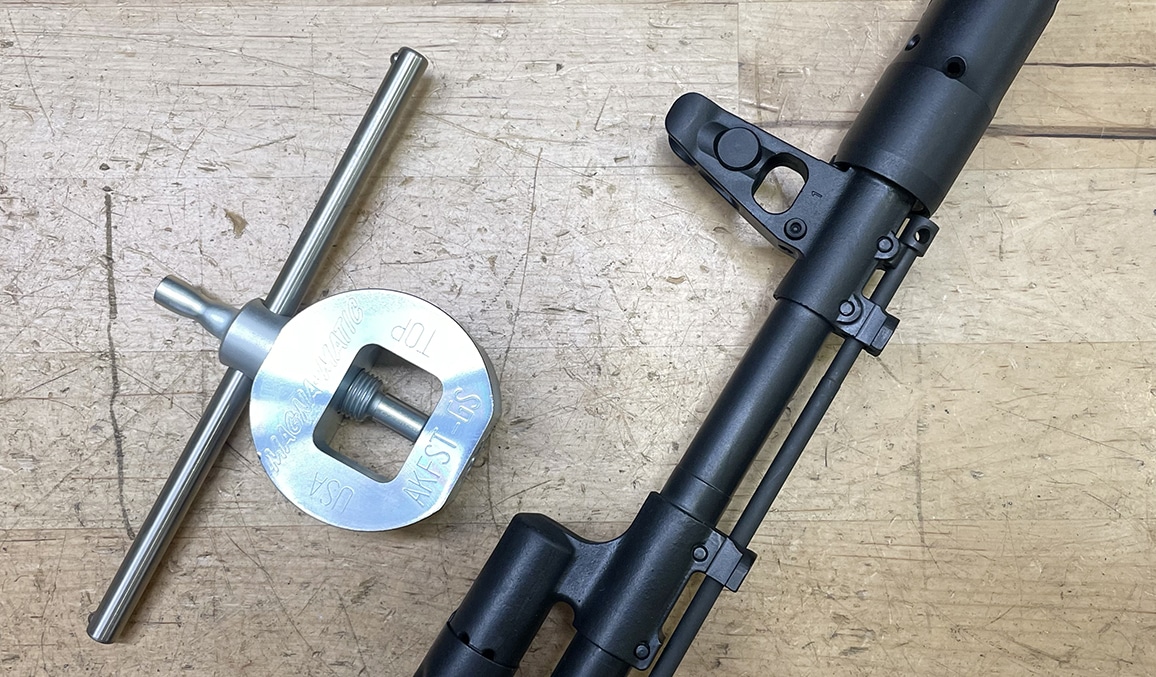Many AK owners don’t fully understand how their new Kalashnikov works. It is quite different from the ubiquitous AR-15. That’s not a bad thing. This article continues our explanation of some of those differences—both good and bad—of your AK rifle over the AR-15.
In part one of this three part series, we discussed how the AK platform was not well-known in the United States until after the Clinton gun ban of 1994 expired in 2004 and was not renewed by Congress. Very few AKs were in the United States prior to that legislation being enacted and former President George Bush had also banned the importation of most AK-style rifles by executive order in 1989. Both of these actions had a chilling effect on the domestic manufacture of military-styled semi-automatic rifles as well as their importation from foreign producers.
After the Clinton ban expired in 2004, many US companies began to again produce these firearms. Importers began to bring in parts kits, minus the receivers and barrels, of many foreign weapons, including AKs. A cottage industry quickly began with more and more US manufacturers producing the receivers, barrels and other parts needed to legally re-manufacture these kits as civilian legal semi-automatic firearms. Other importers brought in modified firearms, devoid of the “evil” features outlined in the Bush ban, and then re-manufactured them with the required number of domestically produced parts.
It was only then that many Americans became familiar with the AK long stroke gas piston platform, the H&K roller-locked system (G3, HK 33 and MP5 derivatives) and variety of other interesting designs that had been banned by politicians for many years. Americans quickly embraced this newfound variety in firearms. They learned that there was more to modern firearms than the ubiquitous AR-15 and that they no longer had to pay “pre-1989” premiums to enjoy a different semi-auto rifle.
Another thing happened after the Clinton gun ban expired in 2004. With the gun regulations now eliminated, US gun manufacturers could go back to building the guns that Americans wanted—as well as standard-capacity 20 and 30 round magazines (which had also been banned). Consumer demand took off and gun companies began ramping up production. They also began to modernize the AR-15 platform with all sorts of innovative accessories including Picatinny handguards, modern optics including red dots and holographic sights, ambidextrous controls and many other features. Companies like Bravo Company (BCM) grew enormously and yet another small parts manufacturer morphed into what is now known as Daniel Defense. In short, Americans embraced their new ability to enjoy firearms previously denied them. Business boomed and countless new jobs were created, including at firms such as Kalashnikov USA.
Thus, in the past twenty years have many Americans become familiar with, and come to enjoy the AK platform and other firearms, that were previously unavailable because politicians had decided to ban them. Keep this history lesson in mind as you elect your political leaders.
The Cold War Genesis of the AR-15
In the first article of this series, we discussed how the AK was developed in the Soviet Union at the end of World War II. The Soviets survived the Nazi invasion thanks to the mobilization of its entire population and industrial base. Millions of men and women were recruited and sent into battle with whatever weapons could be produced, usually Mosin-Nagant bolt action rifles and the PPSh 41 submachine gun.
The Soviets quickly realized the benefit of stamped steel manufacturing used in many German small arms, including the lower cost and faster production. They began adopting it in their manufacture of submachine guns. The original AK design likewise called for stamped sheet metal construction.
Reliability, simple manufacture, and ease of operation were the primary design tenets of Soviet small arms, including the AK. Guns had to operate in sub-freezing winter temperatures as well as in the muddy fields that came with Springtime. The Soviet Army needed millions of weapons produced quickly to repel the Nazi invaders. They also needed to be simple enough to be used and maintained by poorly educated recruits, many of whom had never fired a firearm before.
That was the environment that led to the development of the AK, a robust and reliable steel weapon that required minimal maintenance and that anyone could learn to shoot quickly. Accuracy was secondary. Minute of Man, not Minute of Angle (MOA) was more than sufficient at 100 to 200 meters.
That was the mentality of the designers that produced the AK, including Mikhail Kalashnikov, a combat wounded tanker who knew full well the brutality of winter warfare.
The time period and environment of the designers behind the AR-15 was dramatically different from that of Kalashnikov and his fellow engineers.
The United States had enjoyed several advantages in World War II. For starters, the war was not being fought at home but rather on distant battlefields. American factories were not in danger of being destroyed and civilians (at least on the mainland) were not exposed to attacks. America was able to mobilize its entire industrial base quickly and decisively to provide arms not just for American soldiers but for our allies as well. American became the “Arsenal of Democracy”.
Beginning around 1942, American and Allied military forces began receiving large quantities of US-produced M-1 Garand rifles and M-1 carbines. Thompson submachine guns, Browning Automatic Rifles (BARs) and many light and heavy belt-fed machine guns also became available. The superiority of these semi-automatic and automatic weapons, fielded in abundant quantities, played a pivotal part in turning the tide of battle against both the Nazis and the Japanese Imperial Army.
Towards the end of the war, General George Patton wrote the Army’s Chief of Ordnance and stated “In my opinion, the M-1 rifle is the greatest battle implement ever devised.” He went on to praise other Army weapons, but the M-1 Garand deserved special mention.
Thus, the end of World War II saw the US in an envious global position. Not only had America emerged victorious but it had done so without the bombings and destruction that many of its allies, including Great Britain, had faced during the war.
America entered the post-War era with a remarkable arsenal including millions of semi-automatic and automatic weapons to confront any future battles….which would come soon enough on the Korean peninsula.
There was no pressing need to develop any new weapons as the ones that America possessed were still the pinnacle of infantry weapon technology.
It wasn’t until the late 1950s that the American ordnance corps began looking at new infantry weapon, mainly to comply with the recently standardized 7.62x51mm NATO cartridge. The US-designed T-44 (the predecessor to the M-14) and the Belgian-designed T-48 (the FAL) underwent a competitive process to decide which would become the next US battle rifle. Both rifles performed well in testing with little appreciable differences between the two. Not surprisingly, the US Army Ordnance Corps favored the T-44 which was seen as the descendant of the M-1 Garand. On May 1, 1957, the Secretary of the Army announced the selection of T-44, now renamed the new M-14, as America’s new infantry rifle.
During this period, an aircraft company in California, Fairchild Engine and Airplane Corporation, had a division named ArmaLite exploring the use of aircraft aluminum and fiberglass in a new infantry weapon that would come to be known as the 7.62mm NATO AR-10 and later, in downsized form, as the .223 (5.56mm) AR-15.
Eugene Stoner and the development of the AR-15
Like Mikhail Kalashnikov, Eugene Stoner, the chief designer ArmaLite, had no formal training as an engineer. He was also a veteran of World War II. Stoner had enlisted in the US Marine Corps during WWII and served as an aviation ordnance specialist in the Pacific and in Northern China. Following the war, he found employment in the aviation industry in his home state of California. He eventually joined ArmaLite in 1954.
While Kalashnikov became an arms designer for the Soviet Union’s arms industry, Stoner went to work for a privately owned aircraft company looking to get into the business of arms manufacturing using new technology. It was a “start-up” business within a larger organization, not unlike many of today’s new enterprises.
While Kalashinkov’s AK rifle was seen as a national priority for the wartime Soviet Union, Stoner and the team at ArmaLite were looking to make a profit—during peacetime—by introducing a novel new weapon that did away with the wood, steel and weight of traditional shoulder fired rifles. Lightweight was the priority.
To accomplish their goal, they relied on aluminum and fiberglass to save weight. Stoner also borrowed elements from different previous gun designs, including the Johnson Semiautomatic Rifle (bolt locking system), the Harvey T25 rifle (straight line design with recoil buffer in stock) and the Swedish M42 Ljungman and French MAS 1949 and 1949/56 rifles (simplified gas system).
The resulting firearm was a seven-pound AR-10 rifle that was completed in 1956. However, it was not fully developed to compete in the T-44 and T-48 trials.
The AR-10 went on to see some limited production by the Dutch firm of Artillerie Inrichtingen. Stoner and the team of ArmaLite then turned their attention to a smaller caliber as the Army had been exploring the feasibility of a lightweight rifle firing a .224 caliber bullet.
Stoner’s AR-15 eventually came into being, tweaking the .222 Remington cartridge into the .223 Winchester that would eventually become the 5.56mm NATO. However, when no military contracts were forthcoming, Fairchild sold the rights of the AR-15 ArmaLite design to Colt Firearms in December of 1959.
Having just adopted the M-14, the US Army refused to test the AR-15. So instead, Colt approached the U.S. Air Force. At a demonstration in Maryland, then Air Force Vice Chief of Staff General Curtis Le May was so impressed with the new rifle and ammunition that he ordered 8,500 rifles for the security forces of the Strategic Air Command (SAC).
With that small order, the Colt AR-15, now known as the M-16, began finding acceptance within military circles.
The Army’s M-14 program faced numerous production difficulties and delays. Meantime, the brewing war in Vietnam required a lighter weapon more suitable for the small-statured Vietnamese soldier. The jungle environment of Southeast Asia also favored a more compact, portable weapon than the heavy and long M-14.
By the late 1960s, the M-16 and the M-16A1, had become the prominent infantry weapon of US forces fighting in South Vietnam.
To this day, the M-16, now in the form of the M-4A1 carbine, remains the front-line weapon of the US military.
In our next article (Part 3), we will highlight the different design elements of the AR-15 and the AK-47 and compare these two weapon systems. Designed at different times and with different objectives, they have become the premier small arms of the world today. Stay tuned!





